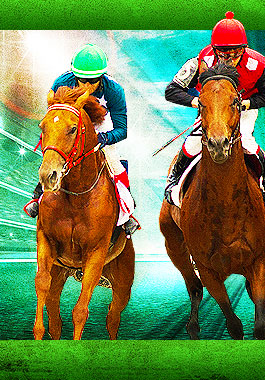Yonkers Race Track
Yonkers Raceway is one of the East Coast's most popular harness racing facilities. Located at Central and Yonkers Avenues, Yonkers, New York, it has been the home of the historic Empire City Trotting Club since 1899. It is still one of today's most preeminent attractions in the tri-state area.
Yonkers Raceway hosts the annual New York Night of Champions which is the culmination of the multi-million-dollar New York Sires Stakes (NYSS) program. The race showcases the "best of the best" among 2- and 3-year olds of both sexes and gaits. The New York Night of Champions began at Yonkers Raceway in 1991 and has been hosted there ever since.
Yonkers Raceway Track Facts
| Area: 97.74
acres
Track: One-half mile oval. Open stretch. No hubrail.
Stable Capacity: 1,454 stalls. |
A Brief History
- In 1899, the track opened as Empire City Trotting Club. It was built at a cost of US $780,000 by copper magnate William H. Clark and grocery tycoon James Butler; the actual construction was done by Seth Griffin. Opening day, September 4, drew 12,000 patrons.
- The track was dark from 1900 to 1906 but reopened in 1907 offering thoroughbred racing. It would become a fixture up to 1942. Major stakes such as the Empire City and Westchester Handicaps attracted the top runners of the era, including Seabiscuit, Discovery, and Questionnaire.
- Pari-mutuel wagering was legalized in 1940. The Westchester track was enlarged and improved at a cost of $600,000. A new building for pari-mutuel machines was created at the end of the grandstand.
- Harness racing returned in 1943, where the Hambletonian was held that year. Volo Song, with Ben White at the controls, won the prestigious event.
- In 1950, the track took on major renovations under direction of William H. Cane, the 'Father of the Hambletonian'. The facility was renamed Yonkers Raceway. A half-mile oval replaced its one-mile predecessor. The venue reopened April 27, 1950 to 21,178 patrons who wagered $688,009. Yonkers achieved the first $1 million handle in trotting history on May 20, 1950. Crowds averaged 14,766 and wagered $688,335 per night over 73 programs that year.
- In 1954, Yonkers Raceway became the first harness facility to top $2 million in handle in a single night.
- In 1955, the Trotting Triple Crown originated with the Yonkers Trot. The Trot conceived to complement the Hambletonian and Kentucky Futurity. The first Cane Pace was also held in that same year.
- In 1962, Yonkers Raceway became the first harness track to top the $3 million handle mark for a single night. It achieved this mark on the night of November 30. A crowd of 35,677 wagered an amazing $3,191,020 on that unforgettable evening.
- On December 15, 1969, Yonkers Raceway achieved its highest ever single-night handle -- $3,220,686.
- In 1990, the 'Hubless Rail' consisting of two-foot Styrofoam pylons, was installed at Yonkers on September 10.
- In 1993, Silver Almahurst (Jim Morrill Jr.) set a world record on a half-mile track by capturing the George Morton Levy Memorial Final on April 24 in a sizzling 1:50:4. American Winner (Ron Pierce) set a new Yonkers Trot record on July 10 by capturing the first jewel in the Trotting Triple Crown in 1:56:2. This mark also set a new Yonkers Raceway track record. On August 14, the USA's Giant Force captured the 35th International Trot in 2:27, a world record for the mile and 1/4 distance.
- In 1996, Yonkers Raceway "stretched the stretch", elongating the homestretch by 50 percent from 440 feet to its present 660 feet.
- In 1997, Yonkers Raceway underwent a dramatic facelift. That same year, Western Dreamer won the Raceway's final Cane Pace en route to capturing the sport's first Pacing Triple Crown since Ralph Hanover some 14 years earlier.
- In 1998, driver Walter Case Jr. won 978 races at Yonkers, smashing the record for the most wins by one driver at one track in a single year. Case's 1,076 total wins also set a single-season standard.
- In 1999, Yonkers Raceway celebrated its centennial with grand festivities.
Place a bet on your favorite horse now.



